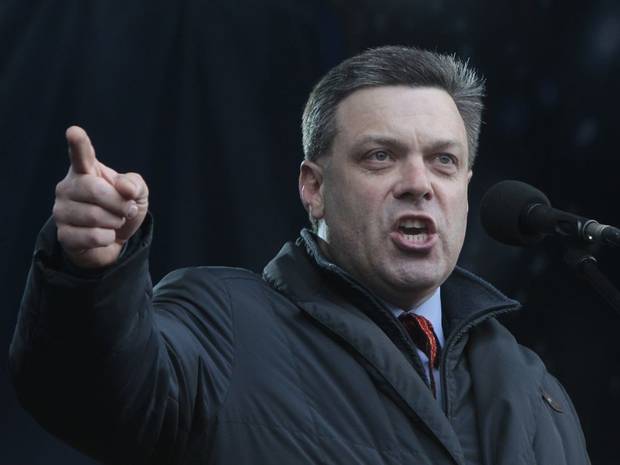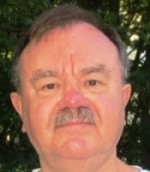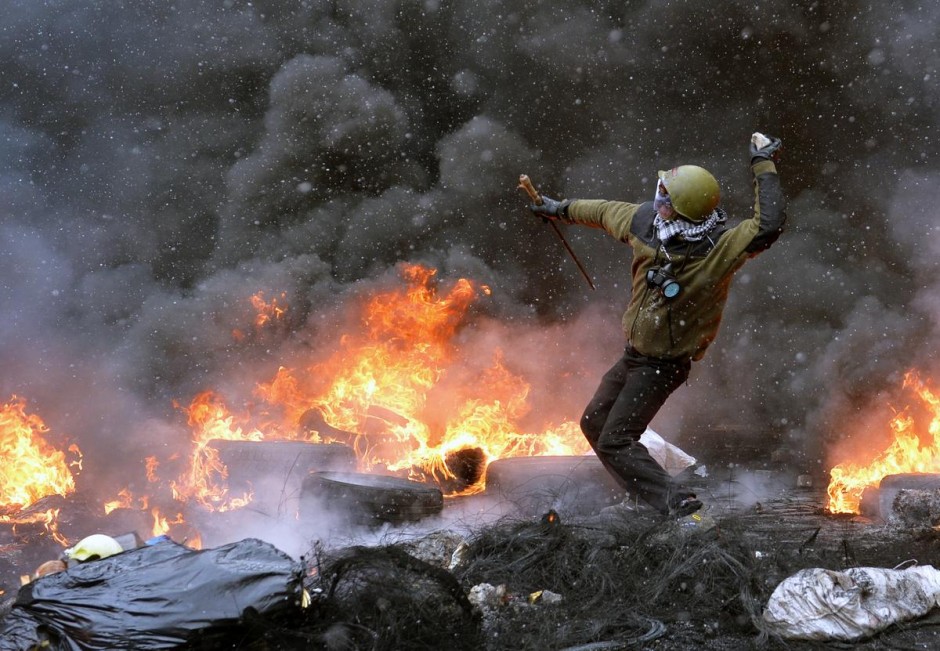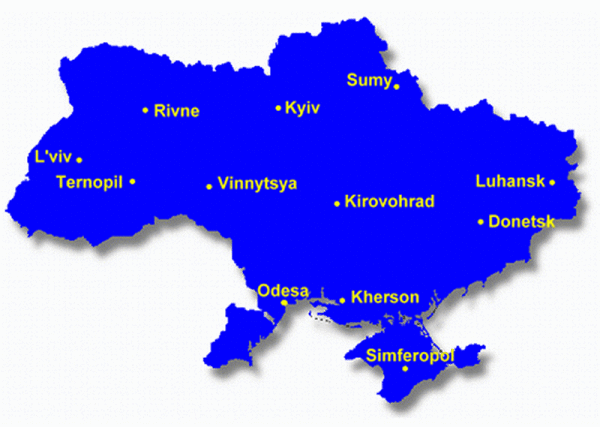If you think the struggle between the ousted pro-Russian president of Ukraine, Viktor Yanukovych, and his pro-European opponents has been going on for months, think again.

This is actually the second go-around. The first time was during the so-called Orange Revolution in 2004, when then Prime Minister Yanukovych faced off in a presidential election against the pro-western Viktor Yushchenko.
Yanukovych was declared the winner, but independent observers reported widespread vote rigging. Yushchenko launched a campaign of mass street protests and civil disobedience, and the Ukrainian Supreme Court annulled the results. In a rerun a month later, Yushchenko won.
But within a few years, the political coalition he had put together had collapsed and some of his supporters joined Yanukovych’s forces in the Party of Regions. In presidential elections held in 2010, Yanukovych was returned to power.
And so the stage was set for the current crisis, which began last November. Thousands of protesters in Kyiv and other cities rallied to object to the government’s sudden decision to abandon an association agreement with the European Union in favor of a Russian loan bailout of $15 billion. The demonstrators blamed the about-face on Russian pressure.
In Soviet times, Ukraine was the second biggest republic in the country, after Russia itself. As the USSR was collapsing, Ukraine declared independence following a nationwide referendum in December 1991.
The loss of its 603,628 square kilometers and 46 million people still irks many Russians. When Russian President Vladimir Putin in 2005 described the dissolution of the Soviet Union as “the greatest geopolitical catastrophe” of the 20th century, he was referring in particular to the loss of Russia’s Slavic neighbours, Belarus and Ukraine, which had been part of the Russian Empire for centuries.
Although most of the protests we see in newscasts today concentrate on Kyiv’s Independence Square, areas in western Ukraine around the city of Lviv have been in the forefront driving the insurgency against Yanukovych. The region favours closer ties with the European Union.
Why is western Ukraine so opposed to Yanukovych? It’s a long story — in fact it goes back centuries.
Although a sovereign state for more than two decades, Ukraine still faces questions regarding its national identity. It is an example of what political scientist Samuel Huntington called a “cleft” or “torn” country, because it faces both east and west religiously and politically. It comprises two distinct cultures — a West European-oriented portion in the west and an eastern section that looks towards Moscow.
The eastern part of the country was controlled by tsarist Russia after 1654. As a result, the people are overwhelmingly Orthodox in religion, and many people speak Russian. Indeed, in the early 1990s, 22 percent of all Ukrainians were ethnic Russians, living mainly in the east, and 31 percent of the Ukrainian people spoke Russian as their primary language.
But the western portion was for many centuries part of Poland, Lithuania, and then the Austro-Hungarian Empire. After the partitions of Poland in the 18th century, the western Ukraine fell under the control of the Habsburgs.
A large proportion of western Ukrainians had over the centuries coalesced around the Uniate (Ukrainian Greek Catholic) Church, which combines Orthodox rites with a fealty to the pope in Rome. Western Ukrainians speak largely Ukrainian and retain strong nationalist sentiments.
When Poland was reconstituted as an independent state after World War I, these territories became part of the Polish republic. (Another small area, Sub-Carpathian Ruthenia, came under Czechoslovak rule.) The eastern Ukraine, meanwhile, was incorporated into the new Russian-dominated Soviet Union.
Following World War II, the victorious Soviet Union annexed the western Ukraine and united it with the Soviet Ukraine. But many in the region fought against incorporation.

Some, like Stepan Bandera, a wartime leader of the militant, terrorist branch of the Organization of Ukrainian Nationalists (OUN), had been a Nazi collaborator and involved in the mass murders of Ukrainian Jews.
Cities like Lviv (previously in Poland) and Uzhgorod (previously in Czechoslovakia) were only under Soviet domination for some 45 years.
The recent elections have made these splits come to the fore. Yanukovych gained most of his support in the east, his challengers — Yushchenko in 2004 and former prime minister Yulia Tymoshenko in 2010 — in the west.
The western Ukraine — where today there are statues honoring Bandera in various cities, including Lviv — is also the political stronghold of the All-Ukrainian Union Svoboda, the ultra-nationalist, far-right antisemitic party, which holds 36 of 450 seats in the Ukrainian parliament.
The party traces its roots to the Nazi-collaborationists partisan army during World War II and last month the party held a torch-lit march in honor of Bandera.

Its leader, Oleh Tyahnybok, has been active in the anti-Yanukovych movement. He has a long history of making inflammatory antisemitic statements, including the accusation before parliament that Ukraine is controlled by a “Muscovite-Jewish mafia.”
There are about 200,000 Jews living in Ukraine, most of them in Kyiv, according to the Jewish Agency.
Russian Foreign Minister Sergey Lavrov has asked, “Why do we not hear statements of condemnation toward those who seize government buildings, attack and burn police officers, and voice racist and antisemitic slogans?”
The Russian foreign ministry has called the protests the “Brown Revolution,” comparing it to the Nazis’ rise to power in the 1930s. It posted a photograph on Twitter of a World War II memorial being toppled in Lviv.
A vote by Ukraine’s parliament to curtail the Russian language’s role in its school curriculum, one of a flurry of new laws adopted, also prompted a warning from one of Russia’s deputy prime ministers, Dmitri O. Rogozin.
Yanukovych has fled to the heavily-Russian Crimea and denounced his removal by parliament and its decision to hold new election in May as a “coup” carried out by “bandits” and “hooligans.”
And regional governors from eastern Ukraine met in Kharkiv and announced that “we have decided to take responsibility for safeguarding the constitutional order, legality, citizens’ rights and their security on our territories.” Areas like the Crimea, overwhelmingly Russian in ethnicity, might consider secession. The peninsula belonged to the Russian Soviet Republic until 1954.
Will Ukraine eventually split in two, each half going in its favored direction? Huntington himself, in his seminal Clash of Civilizations, felt that “Ukraine will remain united, remain cleft, remain independent, and generally cooperate closely with Russia.” But centrifugal forces that may destroy the country’s unity are gaining strength.
Henry Srebrnik is a professor of political science at the University of Prince Edward Island.


